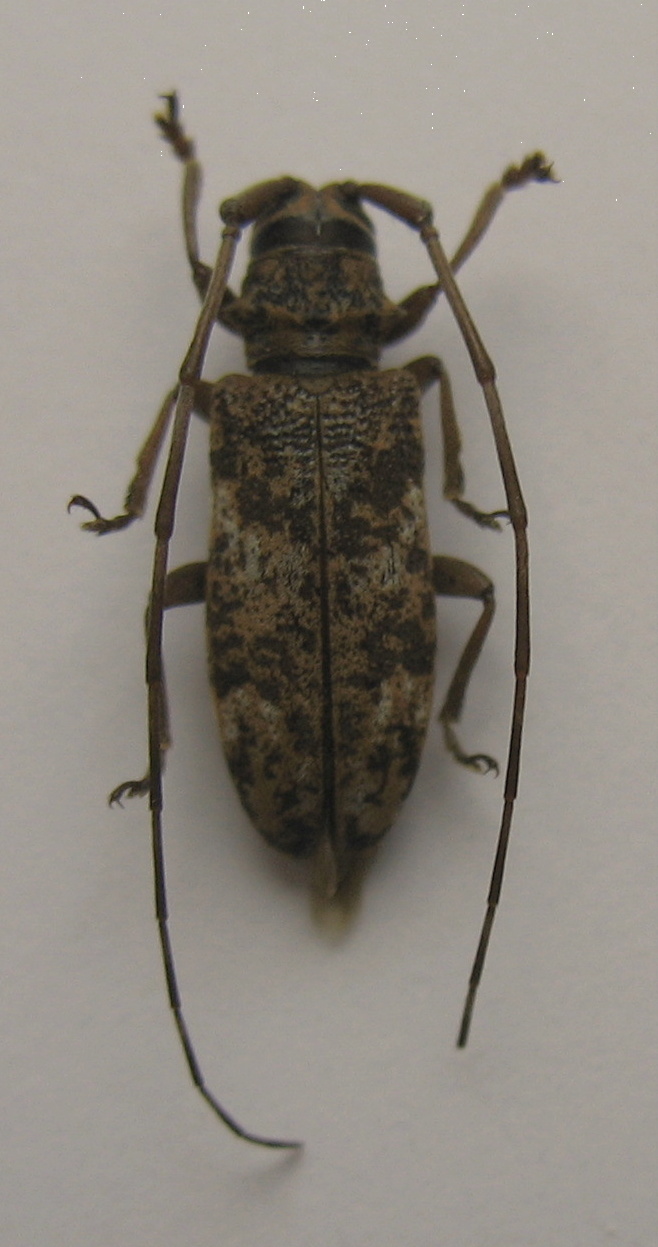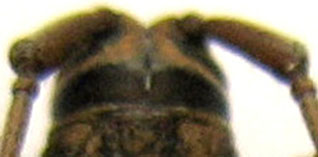| T O P I C R E V I E W |
| Dusan |
Posted - 18/01/2019 : 09:20:23

205.78 KB
Laos, Khammouane prov., size 11 mm.
Can you help me with identification? |
| 15 L A T E S T R E P L I E S (Newest First) |
| Xavier |
Posted - 21/01/2019 : 19:18:55
Same for my specimen here ?
I can add more pictures... |
| Francesco |
Posted - 21/01/2019 : 18:46:00
No idea. I cannot identify a genus of a specimen that I have not got without having it under my microscope.
How can I decide if claws are opposite or not? How can I decide if the prosternum is rightly inclined or not?
Certainly, it is no Epepeotes. |
| Xavier |
Posted - 21/01/2019 : 18:34:49
So, is it an Epepeotes close to E. birmanus or not ? |
| Francesco |
Posted - 21/01/2019 : 18:16:31
No, it is Lamiini in the sense of the international scientific community.
C.à.d. que soit claire: ce n'est pas que dans ce site on utilise une taxonomie particulière.
On utilise la taxonomie reconnue suite des révisions taxonomiques mondiales, pas l'idée bizarre de quelques entomologistes qui s'est amusé a introduire des changements taxonomiques sur la base de sa misérable collection et de son encore plus misérable culture scientifique.
|
| Xavier |
Posted - 20/01/2019 : 22:37:19
Ok, so it is a Lamiini in the sense of the tribe on our forum ? |
| Francesco |
Posted - 20/01/2019 : 21:58:39
I know, but this is the old tribe of "Agniini" which also includes:
Trichagnia Brn, Agniohammus Brn., Stegenodes Brn., Stegenus Pasc., Falsagnia Brn., Orsidis Pasc., Euthyastus Pasc., Pseudothyastus Brn., Acridocephala Chevr., Omocyrius Pasc., Hotarionomus Th., Achthophora Newm., Marmaroglypha Redt., Callipyrga Newm., Laelida Pasc., Combe Th., Pharsalia Th., Pericycos Brn., Triammatus Chevr., Myagrus Pasc., Peribasis Th., Parathyastus Aur., Xoes Pasc., etc.
C'est pour cela que continuer à parler de "Monochamini" n'a aucun sens. |
| Xavier |
Posted - 20/01/2019 : 21:47:45
...but " Agnia" species haven't spines at pronotum.
What difference between this specimen and Epepeotes birmanus Breuning, 1969 here ? |
| Francesco |
Posted - 20/01/2019 : 11:53:41
Ah, oui.
With that trapezoidal forehead it should belong to the group of Agnia and relatives.
|
| Xavier |
Posted - 20/01/2019 : 10:11:20
My specimen here belongs to te same genus (or is the same species ?), with a frontal view of the head in the post. |
| Francesco |
Posted - 20/01/2019 : 10:04:39
Is it possible to have a frontal view of the head? |
| Xavier |
Posted - 19/01/2019 : 23:39:05
With the scape with an open scar, it is a Monochamini/Lamiini for me:

30.39 KB |
| dryobius |
Posted - 19/01/2019 : 23:03:14
I believe the scape of the antennae is not parallel to body.
Many Eunidia are rather drab species, too. |
| Xavier |
Posted - 19/01/2019 : 16:13:18
Ok, but why an Eunidia ? Eunidiini species look totally different, with a long 2nd antennomera...I do not understand. |
| dryobius |
Posted - 19/01/2019 : 14:48:06
E u n i d i a .... sorry for the typo |
| Xavier |
Posted - 19/01/2019 : 00:25:53
What is an Eundia ? |


